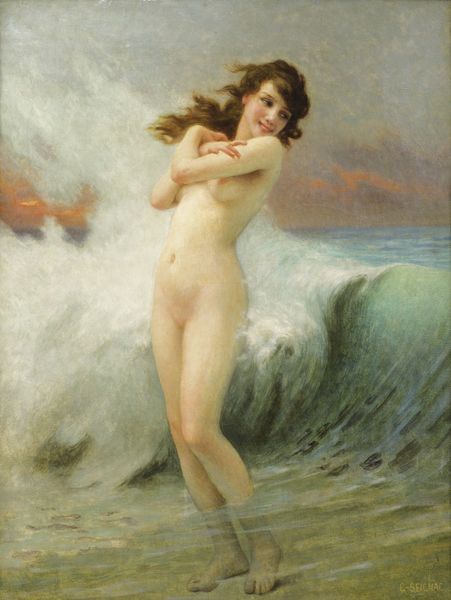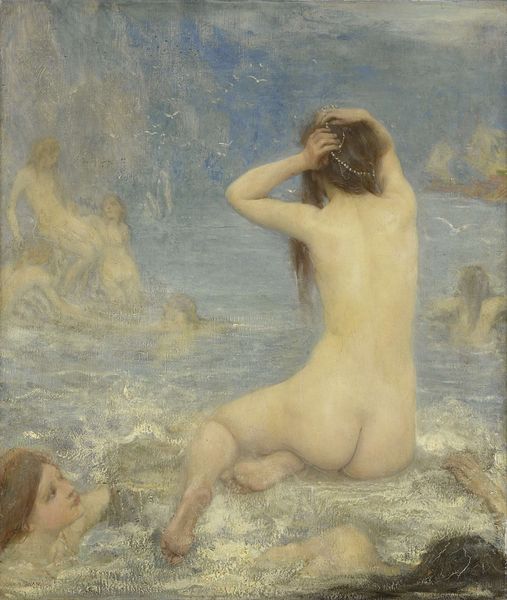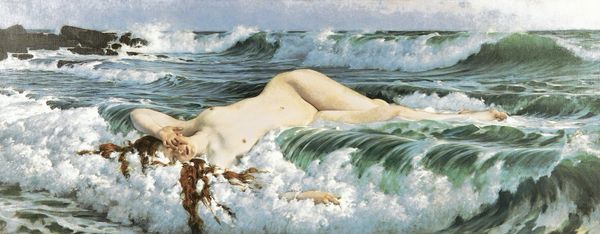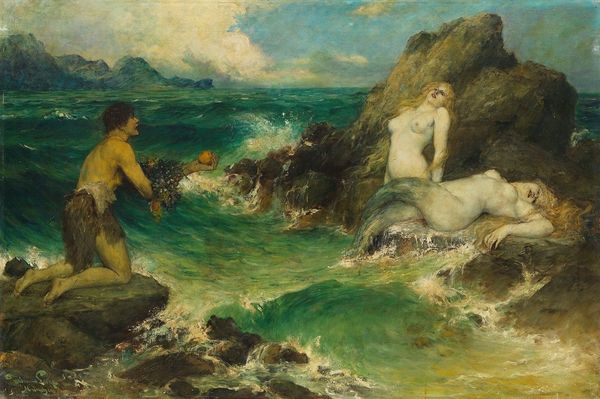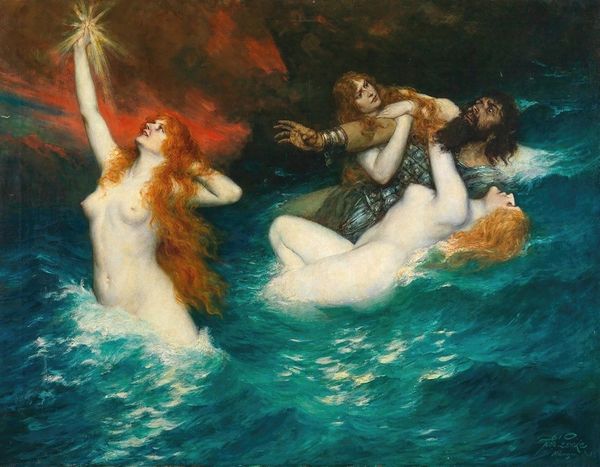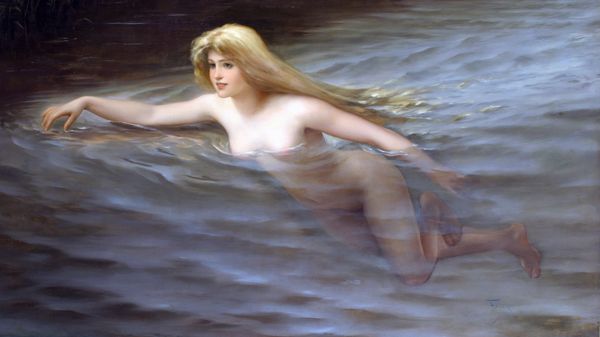
Copyright: Public domain
Editor: Here we have Herbert James Draper’s “The Foam Sprite (study),” painted in 1896. The oil paint application looks quite thick and expressive, capturing a sort of raw energy, wouldn’t you say? What strikes you most about this piece? Curator: I see an interesting intersection between classical subject matter and a turn towards emphasizing the materiality of paint itself. The brushstrokes are incredibly visible, drawing attention to the labor involved. It's almost a study in consumption; Draper is both participating in and perhaps critiquing the Victorian obsession with mythological subjects and female nudes. How does the rough application of the pigment affect your reading of the subject matter? Editor: Well, it definitely disrupts the smooth, idealized forms usually associated with academic painting. The roughness makes it feel more… earthly? Like she's emerging from the raw elements rather than existing as some perfect ideal. Do you think that the artist did it consciously? Curator: Absolutely, but I also consider who the target audience was at the time and the expectations placed on Draper. By imbuing this mythological figure with the raw material, oil paint, it transforms what was just seen as merely ‘decorative’ art in England at the time into something else. Think about it in contrast with the industrial revolution at the time—what is man, what is woman? This image feels like it’s tackling many issues that come with rapid industrial change. Editor: That’s a perspective I hadn’t considered. So, you’re seeing the painting as a commentary on the changing value of both art and labor in the face of industrialization? Curator: Precisely. The materials themselves become a powerful tool to understand shifting social structures and power dynamics. Editor: That's a fascinating way to look at it. I’ll definitely think about the materials used, not just the subject, in future artwork that I examine.
Comments
No comments
Be the first to comment and join the conversation on the ultimate creative platform.
